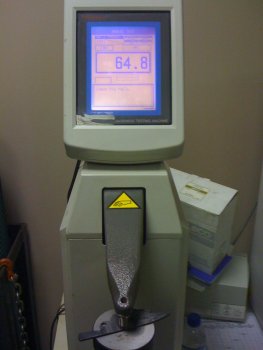Tod Lowe
Well-Known Member
Hey guys.
I quenched this 1095 last night in Mcmaster 11 sec oil. Unfortunately I took it a little to thin before quench and warped it then snapped it trying to fix it.......actually snapped two blades. So it was a good chance to bring it in and test Rockwell's after the quench and before tempering. 64 is what 1095 is supposed to be.
So it was a good chance to bring it in and test Rockwell's after the quench and before tempering. 64 is what 1095 is supposed to be.
The knife has been sanded clean on both sides in the section im testing.
My question is about pearlite versus Martensite. How do you know which you have? My understanding is both are hard. Is there a way a layman can check this?
I quenched this 1095 last night in Mcmaster 11 sec oil. Unfortunately I took it a little to thin before quench and warped it then snapped it trying to fix it.......actually snapped two blades.
The knife has been sanded clean on both sides in the section im testing.
My question is about pearlite versus Martensite. How do you know which you have? My understanding is both are hard. Is there a way a layman can check this?


